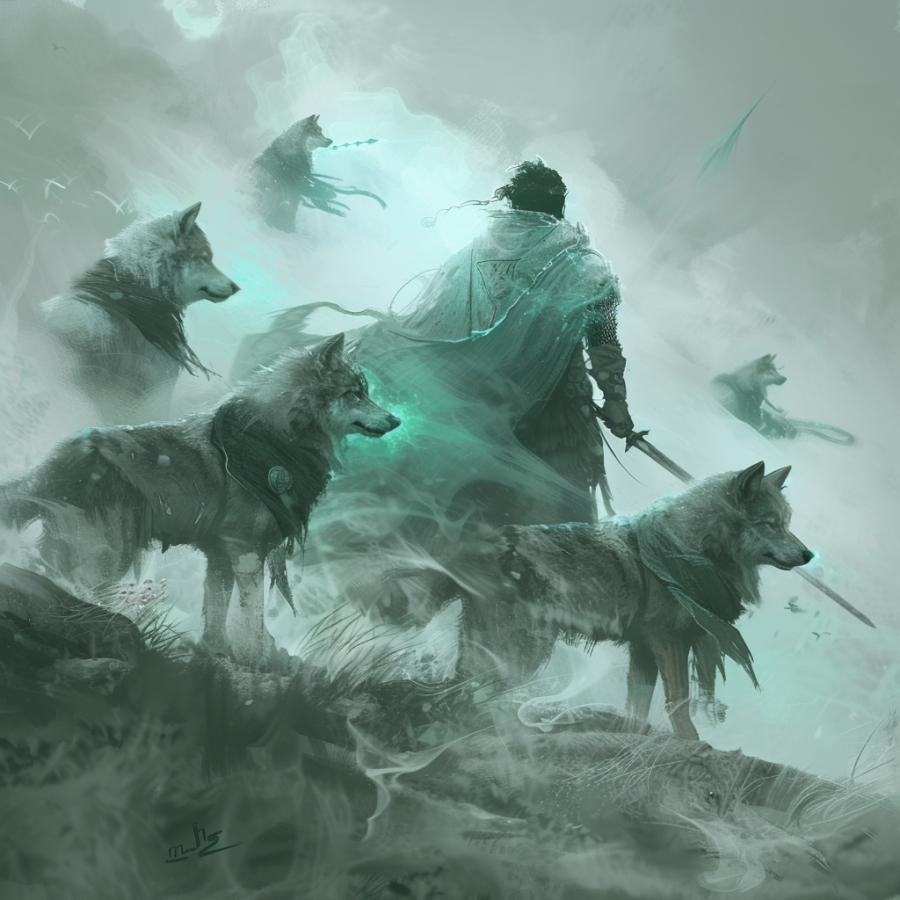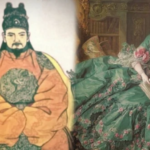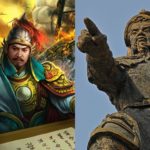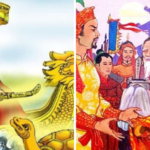Unique “Pet” Pastimes
The Time of Early Le Dynasty
During the time of the Early Le Dynasty (980-1009), King Le Hoan, originally a military commander, came to power with the support of his officials and the people.
In the development of the feudal history of Vietnam, Le Hoan not only left a mark with his outstanding achievements in fighting against the invading forces of the Song Dynasty in the North and the Cham Dynasty in the South, but he was also known for his remarkable achievements in foreign relations and the construction and development of Dai Co Viet.
Le Hoan is remembered as a friendly king who was close to the people. There is a famous story in history that he rolled up his pant legs and controlled a pair of buffalo to plow the fields with the people on the first day of the new year.
Although there is not much detailed information about the royal court during the time of the Early Le Dynasty, through the remaining records, it can be imagined that during that period, King Le Hoan raised wild animals such as pythons, snakes, tigers, etc. in the palace.
The Time of the Ly Dynasty
During the Ly Dynasty (1009-1025), the types of animals kept as pets in the royal court changed, including turtles, elephants, and especially deer.
In the golden age, the Ly kings received many rare and exotic animals from the Cham Dynasty, provinces, districts, and local leaders as gifts.
Throughout the reigns of King Ly Thai Tong, Ly Thanh Tong, and Ly Nhan Tong, Dai Viet witnessed prosperity and continuous development. According to “Dai Viet Su Ky Toan Thu,” in 1061, Ly Thanh Tong received a white elephant from Chau La Thuan and a six-legged turtle with six embryos from Gia Lam district.
When Ly Nhan Tong ascended the throne (1072-1127), a nobleman named Nguyen Vien presented the king with a six-legged turtle with inscribed characters on its shell in the spring of 1086. During the reign of Ly Than Tong (1128-1138), the collection of rare and precious animals became more popular.
Understanding the king’s preferences, many people presented him with rare items such as white deer, turtles with inscriptions, sparrows, crocodiles, river fish, and various ornamental plants. Individuals such as Ly Loc and Ly Tu Khac, despite holding minor positions, were elevated to high-ranking officials for presenting rare white deer. Additionally, many courtiers sought to please the king by contributing to his interesting hobby of animal hunting.

Elephants were prominently featured in the history of the Ly Dynasty.
The Time of the Tran Dynasty
During the Tran Dynasty (1225-1293), the practice of keeping pets in the royal court continued. Perhaps influenced by the fishing communities along the coast, the Tran palace built a large pond to raise rare fish.
Historical records describe a water pond in the royal garden connected to the harem area called Lac Thanh Tri, where bamboo, pine trees, and special flowers were planted.
This pond was designed to be connected to surrounding rivers, with small ponds alongside it. In these brackish ponds, various marine fish such as mullet and perch were released, while freshwater ponds housed fish such as red-tailed needlefish and silver-scaled fish, and some ponds even housed crocodiles.
Not only fish, but the Tran dynasty also had a passion for raising tigers. An extraordinary event during this dynasty was when a tiger caused panic in the royal court: a prison warden from the mountainous region presented a large tiger with black and gold striped fur, straight back, and slim belly.

The Tran Dynasty had the Lac Thanh Tri, where many unique fish were raised.
The Time of the Later Le Dynasty
During the Later Le Dynasty (1428-1527), the tradition of keeping pets in the royal court was maintained. Especially during the reign of Le Thanh Tong (1460-1497), he built eight additional palaces and established Thuong Lam Uyen, a garden dedicated to raising a variety of animals. While there are no detailed records of all the animals, it is known that deer, stags, rabbits, and other species were raised here.
During this period, dogs were mentioned for the first time as an important part of history. They were the trained hunting dogs of Nguyen Xi during the time of Le Loi, described as the strongest four-legged warriors in Vietnamese history.
Historical Significance
During the Ly Dynasty, elephants not only represented strength but also played a prominent role in many historical events of Dai Viet. Elephants became a means of exchanging territories, strengthening ties with the Song Dynasty, and most notably, symbolizing an era of the country under Ly Than Tong’s reign.
An outstanding example is in 1068, during the reign of Ly Thanh Tong, when the king received two precious white elephants from Lang Chau. King Ly Thanh Tong considered this a good omen and changed the year name to Thien Huong Bao Tuong, meaning ‘Heaven Bestows Precious Elephants,’ hoping that the elephants would bring luck and prosperity to the nation.
About a decade later, Dai Viet faced an invasion by the Song Dynasty under the command of Quach Quy. However, under the leadership of the renowned general Ly Thuong Kiet, Dai Viet successfully repelled the invading forces at the Nhu Nguyet River. Quach Quy then retreated to the border and occupied Quang Nguyen province.
By 1078, Ly Nhan Tong dispatched Dao Tong Nguyen with five elephants to present them to the Song Dynasty as part of a diplomatic effort to reclaim Quang Nguyen and free the people who had been captured as prisoners. Through these negotiations, the Song Dynasty eventually returned Quang Nguyen to Dai Viet.
During the early period of the Tran Dynasty, there was a tradition of naming family members after fish species, such as Tran Ly named after carp, Tran Thua named after cucumber fish, Tran Lieu named after climbing fish, and Tran Thi Dung named after tuna. This reflected the ancestral occupation of fishing, and naming descendants after fish species was a way to remember their origins.
Additionally, the Tran dynasty was famous for the tradition of tattooing dragons on their thighs. “Dai Viet Thong Su” recorded the words of the emperor: “Our ancestors have lived in the downstream area, appreciating strength and power. We often tattoo dragons on our thighs as a symbol of our roots.”
The tradition of tattooing dragons has ancient origins dating back to the Bach Viet period, when people in Vietnam were often harassed by the Giao Long species. Their kings ordered their people to tattoo dragons on their bodies, believing that the underwater creatures would not harm those who carried their images. This tradition continued until the time of Tran Anh Tong, when it began to decline.

The dog army was unique during the time of the Later Le Dynasty.
During the time of the Later Le Dynasty, the image of Nguyen Xi’s dog army, with over 100 dogs, became a significant part of history. Nguyen Xi, an outstanding commander under the rule of Le Loi, fought alongside this great king. Le Loi recognized Nguyen Xi’s intelligence and agility by entrusting him with the responsibility of raising and training a pack of large hunting dogs, using music as signals to command them.
According to “Dai Viet Thong Su” by Le Quy Don, Nguyen Xi managed and trained his pack of dogs meticulously, using bells to distribute food and commanding them to advance and retreat in an orderly manner. During campaigns, his dog army became a special force ready for hunting and combat, intimidating the enemy.
Nguyen Xi’s dog army not only assisted the military in hunting and capturing animals during challenging times but also directly participated in battles, causing fear among the enemy. At times, the number of dogs in this hunting dog army reached 500, and they were treated as true warriors, even equipped with armor for protection during combat.
Examining the Long-Term Impact of the 7th May 1954 Dien Bien Phu Victory
As we mark the 66th anniversary of the victorious battle at Dien Bien Phu on May 7, 1954, it is important to reflect on the monumental impact this event had on the world. Let us take a closer look into the historic significance of this momentous occasion in the Vietnamese people’s struggle for independence.
The Only Queen in 1000 Years of Vietnamese Feudal History and Her Tragic Fate
Do you know who is the only female ruler in Vietnam’s feudal history that lasted for 1000 years?



































